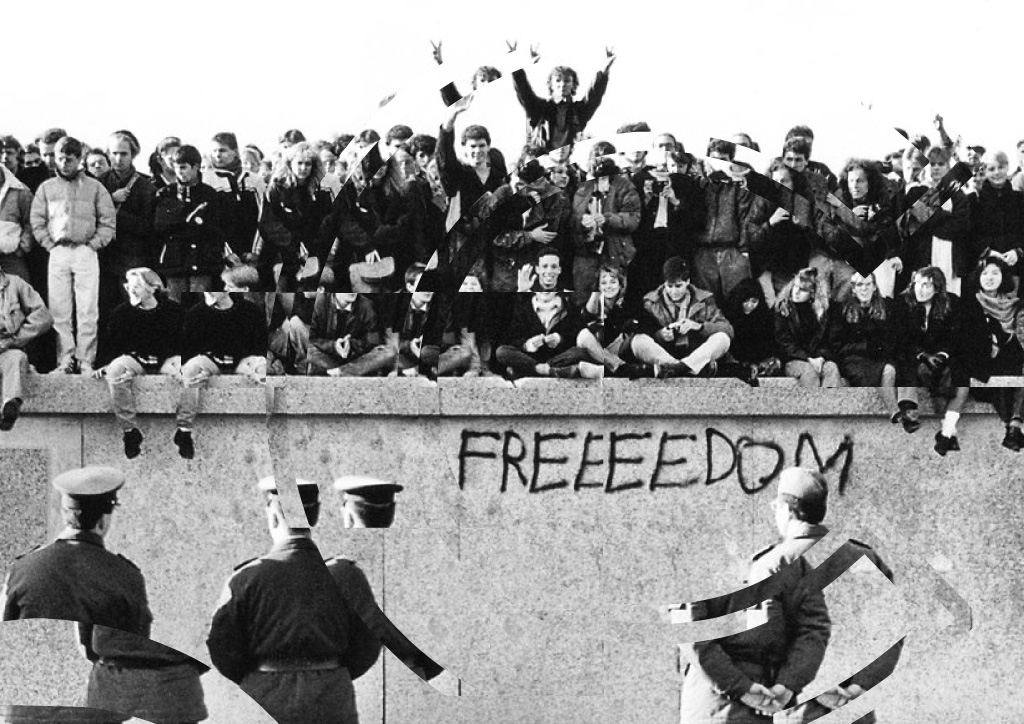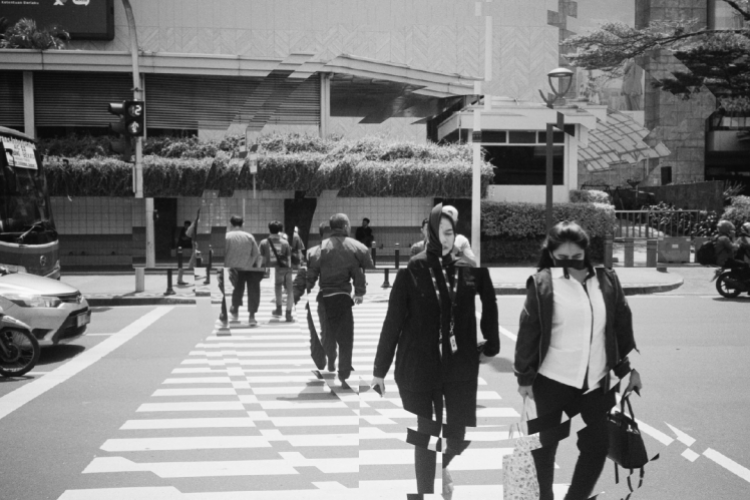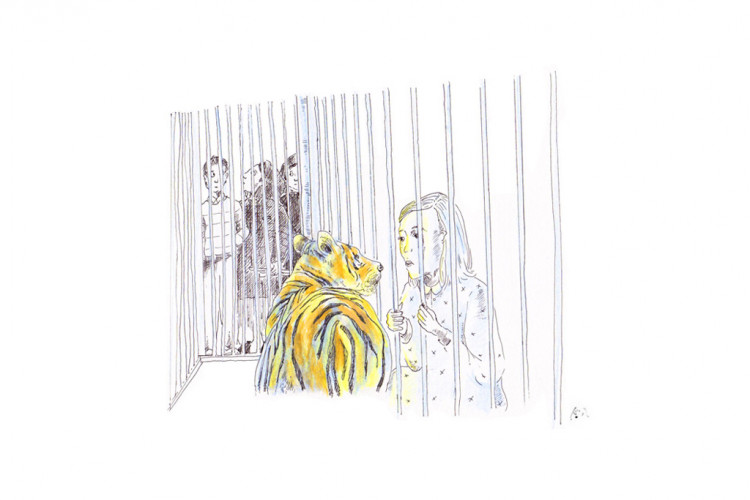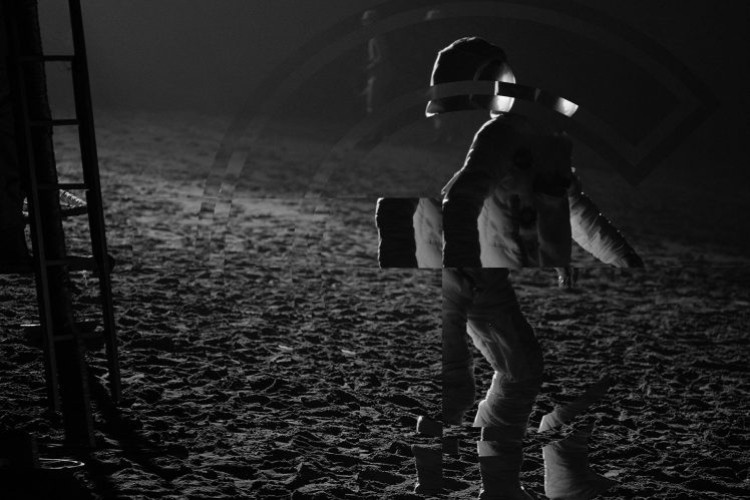
I’ve never been to Berlin.
However, I always am believing that Berlin Wall consists of a single long-wall dividing West and East Berlin—just like the image I saw on numerous documentaries of Germans celebrated the night of Berlin Wall fell in 1989. Even though the wall had become a canvas for many graffiti artists, to my surprise, a friend told me that Berlin Wall was once a huge-solid wall combined barbed wire, bed of nails, guarded by highly arms forces, up and down watchtower. Additionally, as broadcast by Voice of Germany in 1961, a death strip and huge “no man’s land“ was also cleared to provide a line of fire at fleeing refugees in order to stop millions of East German escaping to the West.
Many believe the erecting of Berlin Wall had symbolized the modern era of regime boundaries. When the German Democratic Republic (GDR, East German) Chairman Walter Ulbricht stated, “Niemand hat die Absicht, eine Mauer zu errichten!” (No one has the intention of erecting a wall!)─the word “Mauer” or “the Wall” marks the beginning of using wall to depict physical borders representing a sovereign state eversince. However, apart from marking the existence of Iron Curtain between East- West Berlin territory, the fall of Berlin Wall reveal the horrifying prison of its people; it killed thousands of East German migrant on the crossborder and divided the nation for 28 years!
The erecting of borders and walls are currently become an emblematic of global change. Before 19th Century, borders were just a line on maps defining certain territories that were only heavily guarded when states are at war with its neighbours. (Reece Jones, 2016) Now, the borders are built in the form of walls, fences, and patrolled by military forces or surveillance. For centuries, building walls had proof more harm than good. The biggest question to highlight now is why would a state eager to build a wall in the first place? To whom does the wall design for? This part of a poem, “Minding Wall” wrote in 1914 by an American poet Robert Frost, portrays that question;
…
There, where it is we do not need the wall: He is all pine and I am apple orchard.
My apple trees will never get across
and eat the cones under his pines, I tell him.
He only says,“Good fences make good neighbors.”
Spring is the mischief in me, and I wonder if I could put a notion in his head:
“Why do they make good neighbors?
Isn’t it where there are cows?
But here, there are no cows.
Before I built a wall, I’d ask to know what I was walling in or walling out, And to whom I was like to give offense.
Something there is that doesn’t love a wall
that wants it down.”
He moves in darkness as it seems to me, not of woods only and the shade of trees. He will not go behind his father’s saying, and he likes having thought of it so well
He says again, “Good fences make good neighbors”
…
Through the most anthologized poem on modern literature, Frost use Mending Wall’ lines of /I’d ask to know-What I was walling in or walling out/ to deeply questioning the benefits of a wall between the two [the neighbour and the narrator, that sounds like a farmers; “He is all pine and I am apple orchard” one is a wall-builders with growing pines and the other is wall-breakers with his apple tree] whom often walked along their property line and mending the wall in between.
However, the narrator sees no reason for the wall to be kept /isn’t it where there are cows? But here, there are no cows/ — There are no cows to be contained, just apple and pine trees. He doesn’t believe in walls for the sake of walls! The neighbour resorts to an old adage: “Good fences make good neighbors.” The narrator remains unconvinced, presses the neighbour to look beyond the old- fashioned of such reasoning. His neighbour didn’t sway away but simply repeating the proverb “Good fences make good neighbors”.
This particular adage was a popular colonial proverb in the middle of the 17th century, but variations of it also appeared in Norway (“There must be a fence between good neighbors”), Germany (“Between neighbor’s gardens a fence is good”), Japan (“Build a fence even between intimate friends”), and even India (“Love your neighbor, but do not throw down the dividing wall”).1
This ritual of wall maintenance highlights the nature of society in which the property of someone’s boundaries is affirmed through the affirmation of others. However, by mending this division through a wall, the narrator and his neighbour are able to maintain their personal belonging as a farmer of apple trees and pine trees. Sounds fair?
Yet, by pondering “Mending Walls” we’ll figure out the ‘comical Frost’ whom like to shows the redundant of an existing wall. It is not just ridiculous to have a wall between because the narrator’s apple—as he describe—won’t eat his neighbour’s pine cones, meaning; it will never grow beneath it! Frost constantly doubting the motive of their wall, /If I could put a notion in his head: “Why do they make good neighbors?/ because cynically, Frost reckon if both neighbours acted neighbourly, they will never need any walls at all!
—-
This notion is very similar to the various events happened in many European border due to refugee crisis. Hungary minister of foreign affairs, Laszlo Szabo, for example, were once argue that the fence and barbed wire installed along the Hungarian border were aim to prevent people from crossing the cornfields during the night. (LA Times, 2017) While the truth revealed that it is used to prevent migrant to enter Hungary in looking for asylum. In fact, the fence shall never been installed because as stated in Geneva Convention, every country should provide humanitarian help for those whom fleeing their land of fear and war.
The poem were also very much alike to questioning Trump’s mega wall construction along the U.S.- Mexico border which believed could prevent disseminating illicit drugs and crimes brought within America. This is conflicting to the case of US- Canada border which only build under passport checkpoints with long, open, unguarded stretches in its border crossing!
When Trump stated “nobody builds walls better than me!” during his candidacy for president last year, many believe that the walls will never come to fruition. The threshold requirement in Trump’s wall apparently appears to be more brutal than the idea of building the wall itself! He insisted the wall to be fully funded by Mexican Government, and it shall guaranteed three things; anti-climb features, anti- tunnelling features, and anti-tamper features. (New York Times, 2017) Now, everyone believes that Trump is akin to the folly-outdated-neighbour in Frost’ poem whom insist on “good fences make good neighbors” along with his brand-new Mexican wall plan.
Eventually, we’re about to witness “the walls” emerged as an icon of different political and economic interest, not contentious territorial dispute just like it used to be. It is true that all nations have different border policies, but, generally, almost no nations have walls for centuries!
The starts of an assumption that we have people pouring over the borders are not even accurate. There is no rational correlation between a giant wall and border security. The culture of erecting walls has become a tool to instil hate and division among people. It is equal to an era of isolation where exclusionary or close borders means state contains the poor and protect the wealth for the privilege of their populations. I think we shall understand that the wall is not needed, it shall not targeted anyone per se. Don’t we all as human being supposed to agree with a German political proverb sayin’ “Kein Mensch ist illegal” — no human is illegal?
Ref:
Reece Jones. Violent Borders: Refugees and The Right to Move. London: Verso, 2016.
Robert Frost. Mending Wall. Poetry Foundation, 1914. Michael Dear. Why Walls Won’t Work: Repairing the US-Mexico Divide. New York: Oxford University Press, 2013.
Frederick Kempe. Berlin 1961: Kennedy, Khrushchev, and the Most Dangerous Place on Earth. UK: Penguin, 2013.
“The Wall” ditulis oleh:
Fulca Veda
Freelance journalist and recent graduate of International Affairs, engaged in many discussion ranging from identity politics and cultural studies. Currently developing her interest in design, posting her sketch in instagram. She’s allergic to chicken and seafood











